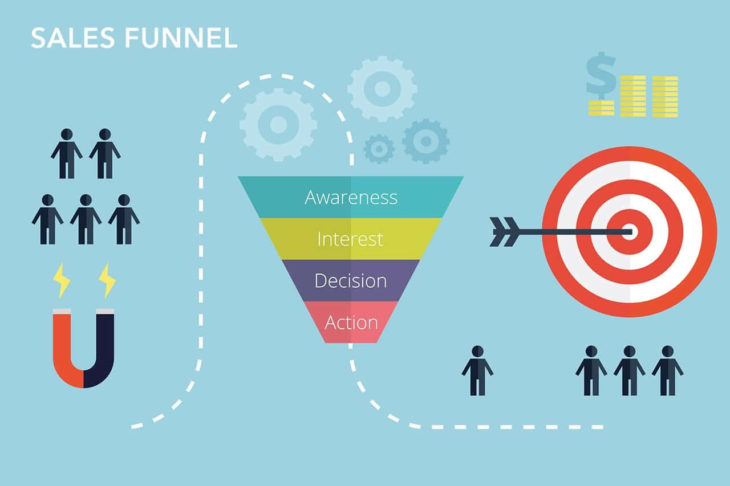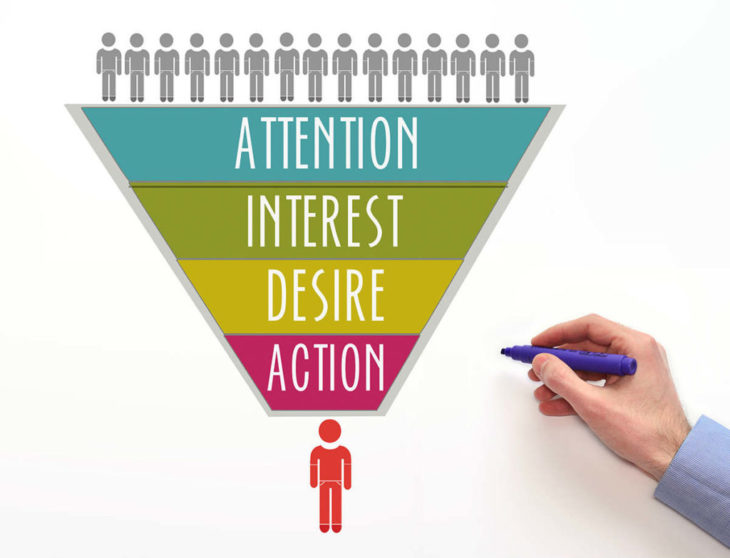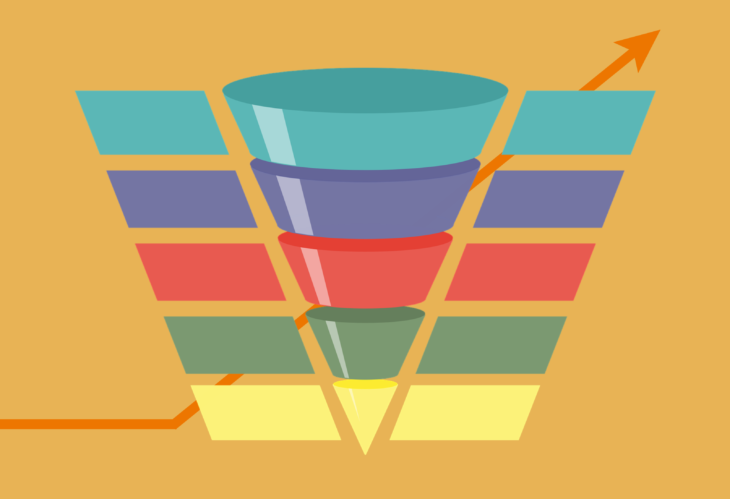If you’ve done your share of research on marketing analytics, you’re probably familiar with the term funnels. Maybe you’re unsure as to what it represents, but we’re here to tell you all you need to know. Every business has a website, or at least it should, and every website is made with a certain goal in mind. When users visit your website, there are certain steps you want them to take. Whether it’s making a purchase, signing up for your newsletter, or other, whenever they perform the action you want them to, it’s increasing your conversion rate. A funnel represents a combination of steps your users need to make in order to reach the conversion.

Source: Nimble CRM
Once we defined funnels, we can move to sales funnels.
Sales funnels can be described as a marketing strategy that includes several crucial steps designed in a way that will improve your sales and your conversion rate. If sales funnels are designed properly, they represent a truly efficient way of increasing your conversion rate.
The main reason why it’s called a funnel is that there are many people who take the first step, but as they continue through next steps the number of people is decreasing leaving only a small number of the initial visitors actually reaching conversion.

Source: AdobeStock
You can even get some help with marketing, selling, and delivering your product or service from certain websites such as ClickFunnel. Another way to reach them and get a free trial and bonuses is through www.getfunnelsdiscount.com
Even though your sales funnel can have as many or as few steps you want it to have, typically a funnel is comprised of four main steps:
- Awareness
- Interest
- Commitment
- Sale
Awareness is the first phase in which the users are becoming aware of the existence of your company. Interest is the second step and it’s when users are looking for a solution to their problem on your website. This is the moment to win them over with your well-designed, user-friendly, appealing website, and interesting content. The commitment phase is when users make a decision to make the conversion. If you’re selling a certain product, in this phase the user decides to make a purchase. They will start looking at the details of what you’re offering and will make the final decision. The final phase is the sale and it’s when the user makes the purchase and becomes your customer.

Source: LeadFuze
The main condition for designing a successful sales funnel is knowing your target audience. You need to define who is your target audience, what are their needs and problems, how are they usually dealing with those problems, what is the best way to communicate with them, and similar. A visitor entering the sales funnel means they’ve become a potential customer. It’s true, however, that with time marketing and sales funnels kind of merged. While marketing funnel will lead visitors to your site, sales funnel will lead them through purchase contemplation, the process of making the purchase, and even the post-purchase experience.
